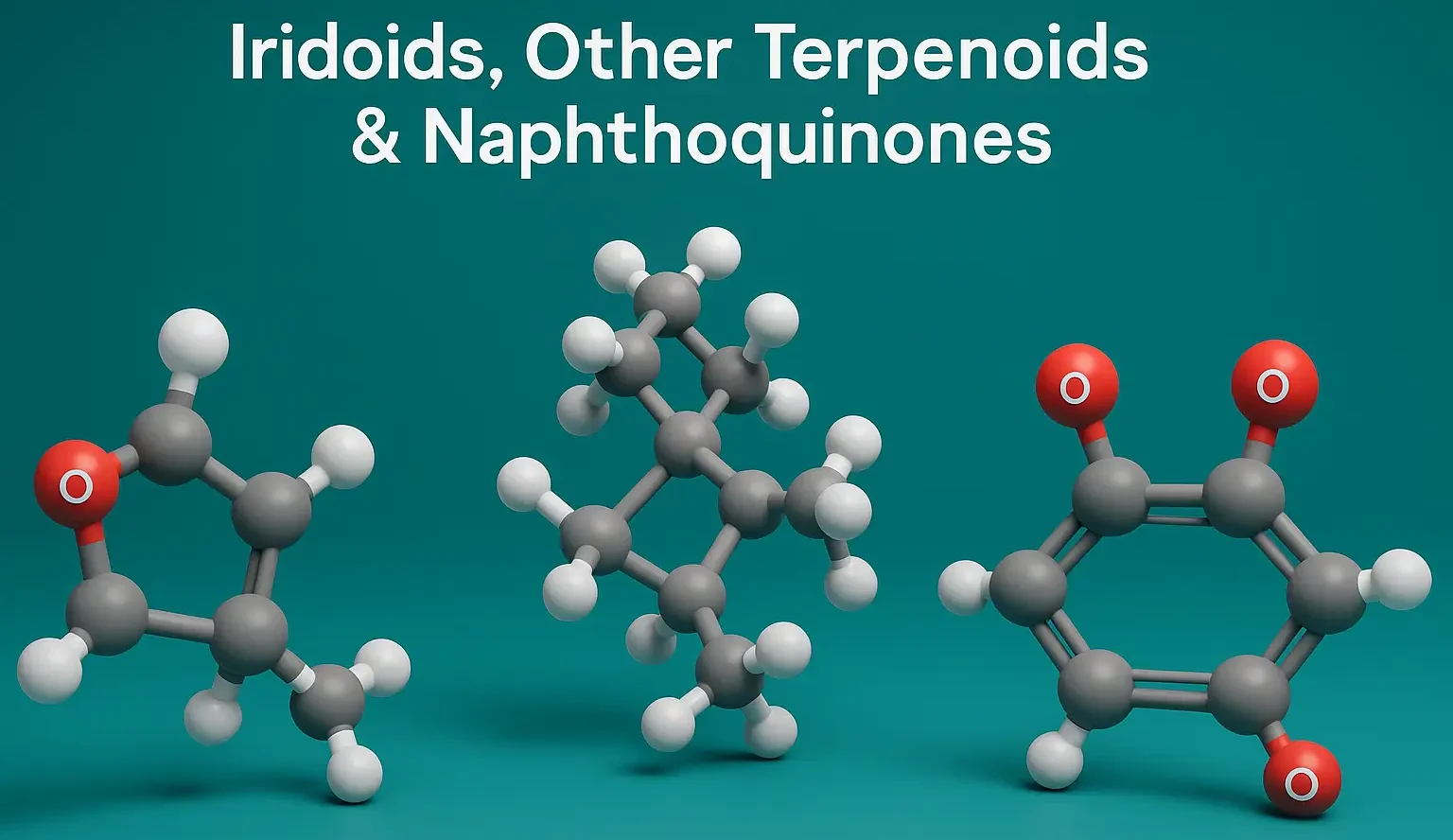Introduction to Iridoids, Other Terpenoids & Naphthoquinones
Iridoids:
- Structure: Derived from monoterpenes with a cyclopentane[c]pyran ring, often occurring as glycosides hydrolyzed to release active aglycones.
- Plant Functions: Serve as defense compounds (bitter and toxic), aid in signaling, and deter herbivores and pathogens.
Other Terpenoids:
- Structure: Derived from isoprene units (C5), forming diverse structures such as monoterpenes, sesquiterpenes, and diterpenes.
- Plant Roles:
- Ecological Interactions: Attract pollinators, repel herbivores, or act as chemical signals.
- Protection: Many exhibit antimicrobial, antifungal, or anti-inflammatory properties.
- Pharmacological Importance: Used in traditional medicine, food flavoring, and as precursors for pharmaceuticals.
Naphthoquinones:
- Structure: Naphthalene ring with two carbonyl groups; conjugation often gives bright colors (yellow to red).
- Biological Roles:
- Function as pigments.
- Defensive properties include generating reactive oxygen species and disrupting cellular processes in predators or pathogens.
- Pharmacological Potential: Possess antimicrobial, antiviral, and anticancer activities, making them valuable for therapeutic applications.
Thank you for reading from Firsthope's notes, don't forget to check YouTube videos!
